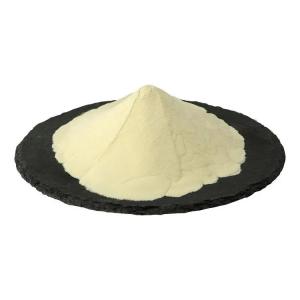The Application of Phospholipids in 3D Bioprinting
Time:2025-07-30As a class of natural lipid molecules with biocompatibility, amphiphilicity, and degradability, phospholipids exhibit unique application potential in 3D bioprinting scaffold materials. Their properties are highly compatible with the requirements of bioprinting for scaffold structure, bioactivity, and cytocompatibility, and related research is gradually expanding their application scenarios.
I. Functional Advantages of Phospholipids in Scaffold Materials
Biocompatibility and biodegradability: Phospholipids are natural components of cell membranes and have good affinity with cells, which can reduce immune rejection reactions caused by scaffold implantation. Meanwhile, they can be degraded into small molecules such as fatty acids and glycerophosphates through in vivo enzymatic hydrolysis or hydrolysis. These products are easily metabolized by the body, avoiding the long-term toxicity risk caused by scaffold residues, and providing a safe microenvironment for cell growth and tissue regeneration.
Amphiphilicity regulating scaffold structure: Phospholipid molecules have both hydrophilic heads and hydrophobic tails, and this amphiphilicity enables them to self-assemble into various structures such as liposomes, micelles, and bilayers in aqueous solutions. In 3D bioprinting, scaffolds with porous structures can be constructed by adjusting the type (e.g., phosphatidylcholine, phosphatidylethanolamine) and concentration of phospholipids. The porosity and pore size can be synergistically regulated through printing parameters and self-assembly characteristics, which is beneficial for cell colonization, nutrient exchange, and metabolic waste excretion.
Construction of bionic microenvironment: Phospholipid scaffolds can simulate the lipid microenvironment of the extracellular matrix. While providing mechanical support for cells, they interact with cell surface receptors through their surface bioactive sites (e.g., phosphate groups, amino groups) to regulate cell adhesion, proliferation, and differentiation. For example, phospholipid molecules can enhance the interaction between cells and scaffolds by modifying integrin ligands, promoting the functional expression of specific cells such as osteoblasts and chondrocytes.
II. Preparation and Printing Strategies of Phospholipid-Based Scaffolds
Construction of composite systems: Due to the low mechanical strength of pure phospholipid materials, which cannot directly meet the requirements of 3D bioprinting for scaffold structural stability, they are usually used in combination with other materials. For example, phospholipids are mixed with natural polymers (e.g., gelatin, sodium alginate) or synthetic polymers (e.g., polycaprolactone, polylactic acid). By adjusting the component ratio, the mechanical properties and bioactivity of the scaffold can be balanced. The addition of phospholipids can also improve the hydrophilicity of polymer materials and enhance cytocompatibility.
Adaptation of printing processes: Phospholipid-based materials can be shaped by extrusion-based bioprinting. The rheological properties of their printing inks can be regulated by phospholipid concentration, temperature, and composite components. For example, at a certain temperature, phospholipids can form a gel with shear-thinning properties, which is easy to be extruded through the printing nozzle, and can quickly restore structural stability after extrusion, ensuring the precise three-dimensional structure of the scaffold. In addition, combined with photocrosslinking technology, phospholipid scaffolds modified with photosensitive groups can be secondary cured to further enhance structural stability.
III. Application Scenarios and Research Progress
Tissue engineering repair: In bone tissue engineering, phospholipid composite scaffolds can load osteoblasts or growth factors (e.g., bone morphogenetic proteins) to promote bone regeneration by simulating the lipid environment of bone matrix. In skin tissue engineering, the porous structure of phospholipid scaffolds is conducive to the migration and proliferation of keratinocytes and fibroblasts, accelerating wound healing.
Drug sustained-release carriers: The hydrophobic regions of phospholipid-based scaffolds can encapsulate fat-soluble drugs, and the hydrophilic regions can load water-soluble drugs to achieve controlled drug release. During 3D printing, the drug release rate can be adjusted by precisely controlling the pore structure and phospholipid composition of the scaffold to meet the drug delivery needs in different tissue repair processes.
IV. Challenges and Prospects
At present, the mechanical strength of phospholipid-based scaffold materials still needs to be further improved to meet the repair needs of load-bearing tissues (e.g., bone, cartilage). Meanwhile, the stability of phospholipids during printing and the regulation of long-term degradation behavior of scaffolds need in-depth research. In the future, through molecular design (e.g., chemical modification of phospholipids), optimization of composite systems, and innovation of printing processes, it is expected to promote the practical application of phospholipid-based scaffolds in 3D bioprinting, providing more bionic material options for tissue engineering and regenerative medicine.


 CN
CN





